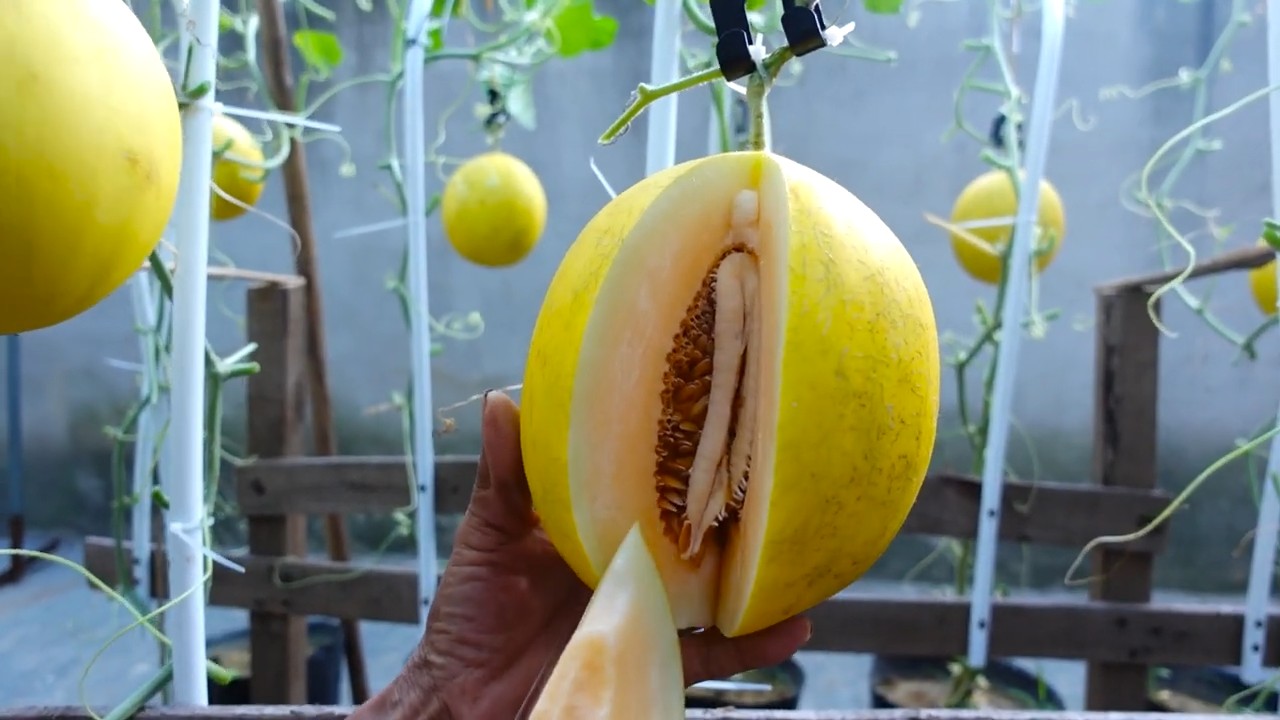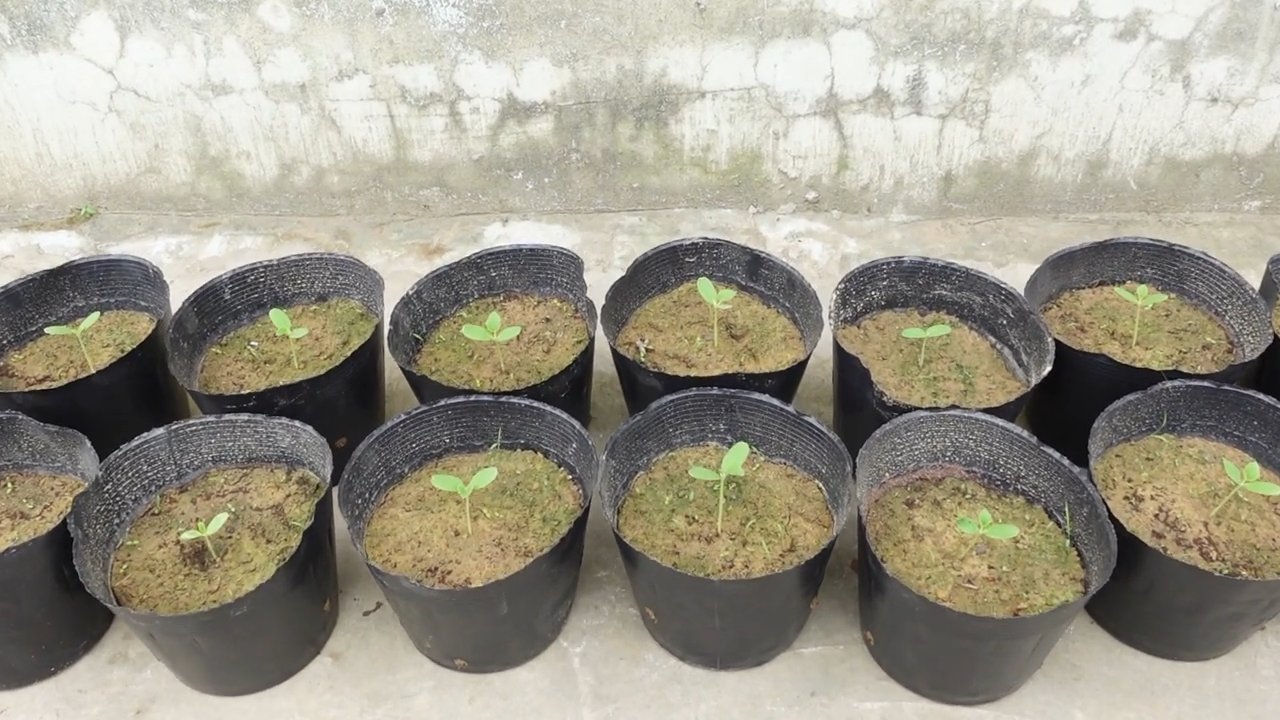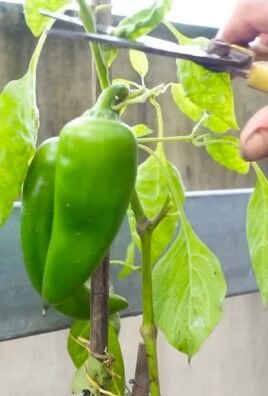Grow Sweet Cantaloupe right in your own backyard! Imagine biting into a juicy, sun-ripened cantaloupe, bursting with flavor, knowing you nurtured it from seed to table. Forget those bland, store-bought melons – this year, we’re taking control and cultivating our own sweet, aromatic delights.
For centuries, cantaloupe has been a symbol of summer abundance and a refreshing treat enjoyed across cultures. From ancient Egypt, where melons were cultivated for royalty, to the vibrant markets of modern-day Italy, the cantaloupe holds a special place in culinary history. But you don’t need to be a pharaoh or a seasoned farmer to enjoy the fruits (or rather, vegetables!) of your labor.
Many people shy away from growing cantaloupe, thinking it’s too difficult or requires too much space. But I’m here to tell you that with a few simple tricks and DIY hacks, you can successfully grow sweet cantaloupe even in a small garden or container. This article will guide you through the entire process, from selecting the right seeds to harvesting your perfectly ripe melons. We’ll cover everything from soil preparation and watering techniques to pest control and maximizing sweetness. So, ditch the grocery store and get ready to experience the unparalleled satisfaction of growing your own delicious cantaloupe!

How to Grow Sweet Cantaloupe Melons: Your DIY Guide
Hello dear garden friends! I love cantaloupe melons, and there’s nothing better than enjoying a juicy, homegrown melon. That’s why today I want to show you how you can grow your own sweet cantaloupe melons. Don’t worry, it’s easier than you think!
The Basics for Cantaloupe Cultivation
Before we get started, here are a few important things you should consider:
-
Sunshine: Cantaloupe melons love the sun! They need at least 6-8 hours of direct sunlight per day.
-
Soil: The soil should be well-draining and rich in organic matter. A slightly acidic to neutral pH (6.0-7.0) is ideal.
-
Water: Regular watering is important, especially during fruit formation. However, avoid waterlogging, as this can lead to root rot.
-
Warmth: Cantaloupe melons are heat-loving. The soil temperature should be at least 18°C before you plant them.
-
Space: Cantaloupe plants need space to spread out. Plant them with sufficient distance from each other.
Step-by-Step Guide: Growing Cantaloupe Melons
Here is a detailed guide that will take you through the entire process:
1. Preparation: The Right Start is Crucial
-
Choose seeds: Select high-quality cantaloupe seeds from a trusted supplier. There are various varieties, so pick one that you like and is suitable for your climate. Popular varieties include ‘Hale’s Best Jumbo,’ ‘Athena,’ and ‘Ambrosia.’
-
Start indoors (optional): To extend the season, you can start the seeds indoors 4-6 weeks before the last frost. Fill small pots with seed starting mix and sow the seeds about 1 cm deep. Keep the soil moist and place the pots in a warm, bright place. A heating mat can help to increase the soil temperature.
-
Prepare the soil: Prepare the garden soil as soon as the danger of frost has passed and the soil temperature is at least 18°C. Loosen the soil and remove stones and weeds. Mix in plenty of compost or well-rotted manure to enrich the soil with nutrients.
-
Create beds (optional): Cantaloupe melons benefit from raised beds, as they improve drainage and warm the soil faster. Simply build a mound of soil that is about 20-30 cm high.
2. Planting: The Move Outdoors
-
Harden off (if started indoors): If you started the seeds indoors, you must harden off the plants before planting them out. To do this, place them outdoors during the day for a week and bring them back in at night. Start with a few hours and increase the time each day.
-
Planting: Make holes in the prepared soil that are slightly larger than the plants’ root balls. Carefully place the plants in the holes and fill them with soil. Make sure the top of the root ball is level with the soil surface.
-
Spacing: Plant the plants with a distance of about 90-120 cm from each other. If you are creating rows, the rows should be about 1.5-2 meters apart.
-
Watering: Water the plants thoroughly after planting.
3. Care: Keeping Your Plants Healthy and Happy
-
Watering: Water the plants regularly, especially during dry periods. Avoid wetting the leaves, as this can promote fungal diseases. Drip irrigation is ideal.
-
Mulching: Mulch the soil around the plants with straw, wood chips, or black plastic film. Mulch helps to retain moisture in the soil, suppress weeds, and increase the soil temperature. Black plastic film is particularly effective at warming the soil.
-
Fertilizing: Fertilize the plants every 2-3 weeks with a balanced fertilizer. Make sure the fertilizer is rich in potassium, as this promotes fruit formation. You can also use organic fertilizers like compost tea or fish fertilizer.
-
Weed control: Keep the area around the plants free of weeds. Weeds compete with the plants for nutrients and water.
-
Pests and diseases: Watch out for pests like aphids, cucumber beetles, and spider mites. If necessary, combat them with natural insecticides like neem oil or insecticidal soap. Also watch for diseases like powdery mildew and root rot. Ensure good ventilation and avoid waterlogging to prevent diseases.
-
Trellising (optional): Cantaloupe melons can get quite large and spread out. If you have limited space, you can train them up a trellis. Gently attach the shoots to the trellis.
4. Harvest: The Sweet Reward of Your Labor
-
Recognizing ripeness: Recognizing the ripeness of a cantaloupe melon can be a bit tricky, but with a little practice, you’ll figure it out quickly. Here are a few signs:
-
Color: The rind of the melon should change from green to beige or yellowish.
-
Scent: The melon should have a sweet, aromatic scent, especially at the blossom end (the end opposite the plant).
-
Stem: The stem should detach easily from the melon. If you gently twist the melon and the stem comes off on its own, it’s ripe.
-
Sound: If you tap the melon, it should sound hollow.
-
-
Harvesting: When the melon is ripe, carefully cut it from the stem with a sharp knife or garden shears.
-
Storage: Cantaloupe melons can be stored at room temperature for a few days. They last a little longer in the refrigerator, but they can lose some flavor.
Additional Tips for a Bountiful Harvest
-
Pollination: Cantaloupe melons rely on pollination by bees and other insects. If you have few bees in your garden, you can hand-pollinate the flowers. To do this, take a small brush and transfer the pollen from the male flowers (thin stem) to the female flowers (small fruit at the base).
-
Pruning: Pruning the plants can help promote fruit formation. Remove side shoots that do not bear flowers or fruits.
-
Protection from animals: Ripe cantaloupe melons are a delicacy for many animals, such as birds, rodents, and deer. Protect your melons with nets or fences.
Common Problems and Solutions
-
No fruit: If your plants are flowering but not producing fruit, this may be due to a lack of pollination. Try to hand-pollinate the flowers.
-
Small fruits: If the fruits remain small, this may be due to a lack of nutrients or water. Fertilize the plants regularly and water them sufficiently.
-
Root rot: Root rot is caused by waterlogging. Ensure good drainage and avoid overwatering the plants.

Conclusion
So, there you have it! Growing sweet cantaloupe at home, while it might seem daunting at first, is entirely achievable with a little know-how and the right approach. We’ve walked you through the essential steps, from selecting the perfect seeds and preparing your garden to nurturing your vines and harvesting that juicy, orange goodness. But the real magic lies in the DIY trick we’ve shared – the secret to unlocking unparalleled sweetness and flavor in your homegrown cantaloupe.
Why is this DIY trick a must-try? Because it’s a game-changer. It’s the difference between a decent cantaloupe and a cantaloupe that rivals anything you’d find at a farmer’s market. By focusing on soil health, strategic watering, and, most importantly, that clever sugar-boosting technique, you’re not just growing cantaloupe; you’re cultivating an experience. You’re creating a fruit that bursts with flavor, a fruit that embodies the essence of summer, a fruit that will leave you wanting more.
Think of the possibilities! Imagine serving slices of your own homegrown, incredibly sweet cantaloupe at your next barbecue. Picture the look on your friends’ faces as they savor the taste of sunshine and sweetness. Envision yourself enjoying a refreshing cantaloupe smoothie on a hot afternoon, knowing that every sip is packed with vitamins and the satisfaction of your own hard work.
But don’t stop there! Feel free to experiment with variations on our DIY trick. Try different types of natural sweeteners, like honey or maple syrup, to see how they affect the flavor profile of your cantaloupe. Consider adding a touch of citrus zest to the soil for an extra layer of complexity. Explore different mulching techniques to conserve moisture and suppress weeds. The possibilities are endless!
We encourage you to take the plunge and try growing sweet cantaloupe using our DIY trick. Don’t be afraid to get your hands dirty, to experiment, and to learn from your mistakes. Gardening is a journey, and every step of the way is an opportunity to grow, both literally and figuratively.
And most importantly, we want to hear about your experience! Share your photos, your tips, and your triumphs with us. Let us know what worked for you, what challenges you faced, and what delicious creations you came up with using your homegrown cantaloupe. Together, we can create a community of cantaloupe enthusiasts, sharing our knowledge and inspiring each other to grow the sweetest, most flavorful fruit imaginable. So, grab your seeds, get your garden ready, and prepare to embark on a cantaloupe-growing adventure that you won’t soon forget! Happy gardening!
Frequently Asked Questions (FAQ)
What exactly is the DIY trick you mentioned, and why is it so important for growing sweet cantaloupe?
The DIY trick we’re referring to involves adding a small amount of natural sweetener, such as molasses or brown sugar, to the soil around your cantaloupe plants a few weeks before harvest. This provides an extra boost of readily available sugars to the developing fruit, resulting in a significantly sweeter and more flavorful cantaloupe. It’s important because cantaloupes, like all fruits, require sugars to develop their characteristic sweetness. By supplementing the soil with these sugars, you’re essentially giving your cantaloupes a head start and ensuring they reach their full potential for sweetness.
How much sweetener should I add, and when is the best time to apply it?
A good rule of thumb is to add about 1-2 tablespoons of molasses or brown sugar per plant. Dissolve the sweetener in a gallon of water and then gently pour the solution around the base of the plant, being careful not to get it directly on the leaves or stem. The best time to apply this is approximately 2-3 weeks before you anticipate harvesting your cantaloupes. This allows the plants enough time to absorb the sugars and transport them to the developing fruit.
Can I use other types of sweeteners besides molasses or brown sugar?
Yes, you can experiment with other natural sweeteners like honey, maple syrup, or even fruit juice. However, molasses and brown sugar are often preferred because they also contain trace minerals that can benefit the soil and the plant. If you’re using honey or maple syrup, be sure to dilute them well with water to prevent attracting pests. Avoid using artificial sweeteners, as they won’t provide the same benefits and may even harm your plants.
What if I don’t have access to any of these sweeteners? Are there any alternatives?
If you don’t have any sweeteners on hand, you can still improve the sweetness of your cantaloupes by focusing on other factors, such as soil health, proper watering, and adequate sunlight. Ensure your soil is rich in organic matter and well-draining. Water deeply but infrequently, allowing the soil to dry out slightly between waterings. And make sure your cantaloupe plants receive at least 6-8 hours of direct sunlight per day. These factors will all contribute to the overall sweetness and flavor of your cantaloupes.
How do I know when my cantaloupe is ripe and ready to harvest?
There are several telltale signs that indicate a cantaloupe is ripe. First, the skin will change color from green to a more yellowish or tan hue. Second, the stem will begin to crack and separate from the fruit, a process known as “slipping.” Third, the cantaloupe will emit a sweet, musky aroma. Finally, the blossom end (the end opposite the stem) will feel slightly soft to the touch. Once you observe these signs, your cantaloupe is likely ripe and ready to be harvested.
My cantaloupe plants are producing fruit, but they’re not very sweet. What could be the problem?
There could be several reasons why your cantaloupes aren’t as sweet as you’d like. Insufficient sunlight, poor soil quality, overwatering, and inadequate pollination can all contribute to less-than-sweet fruit. Make sure your plants are receiving enough sunlight, that your soil is rich in organic matter, and that you’re watering deeply but infrequently. You can also try hand-pollinating the flowers to ensure proper fruit set. And, of course, don’t forget to try our DIY trick of adding a natural sweetener to the soil a few weeks before harvest!
Are there any specific varieties of cantaloupe that are known for being particularly sweet?
Yes, there are definitely some cantaloupe varieties that are known for their exceptional sweetness. Some popular choices include ‘Athena’, ‘Ambrosia’, ‘Hales Best Jumbo’, and ‘Sugar Cube’. When selecting cantaloupe seeds, look for varieties that are specifically bred for sweetness and flavor. You can also check online reviews and gardening forums to see what other gardeners recommend.
My cantaloupe plants are attracting pests. What can I do to protect them?
Cantaloupe plants can be susceptible to various pests, such as aphids, squash bugs, and cucumber beetles. To protect your plants, you can try using organic pest control methods, such as insecticidal soap, neem oil, or diatomaceous earth. You can also try companion planting with herbs like basil or marigolds, which can help repel pests. Regularly inspect your plants for signs of infestation and take action promptly to prevent the problem from spreading.
Can I grow cantaloupe in containers?
Yes, you can grow cantaloupe in containers, but you’ll need to choose a large container (at least 20 gallons) and select a compact or bush-type variety. Make sure the container has good drainage and that you’re using a high-quality potting mix. You’ll also need to provide a trellis or other support for the vines to climb on. Container-grown cantaloupes may require more frequent watering and fertilization than those grown in the ground.
How can I improve the soil for growing sweet cantaloupe?
Improving the soil is crucial for growing sweet cantaloupe. Start by amending your soil with plenty of organic matter, such as compost, aged manure, or leaf mold. This will improve drainage, aeration, and nutrient retention. You can also add a slow-release fertilizer specifically formulated for fruits and vegetables. Before planting, test your soil’s pH and adjust it if necessary to a range of 6.0 to 6.8, which is ideal for cantaloupe.




Leave a Comment